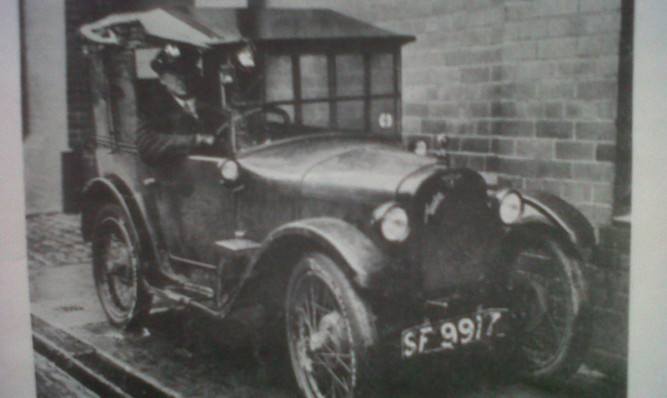Automobilia linked to the derring-do of men who conquered Britain’s highest mountain on four wheels and two has surfaced for auction in Angus.
The 4,409 feet of Ben Nevis continues to present a potentially deadly challenge to hillwalkers and mountaineers, but almost 85 years ago was the setting for a mechanical ascent in what was then the nation’s most popular small car.
As the age of motoring moved through the gears, car nut George Simpson from Edinburgh weaved his way to the top of the mountain in a Baby Austin 7, scraping between the handrails of bridges over the narrow Nevis gulleys and nursing the tiny tourer across the treacherous rocky terrain in October 1928.
Simpson, who was in his twenties, was inspired to tackle the peak after watching a Pathe film of another Edinburgh man making his second ascent of the mountain in a US-made Ford.
With few modifications, the 747cc Austin completed the remarkable feat without major drama, and little more than a bent mudguard.
What eventually happened to the car, SF 9917 remains uncertain, but Simpson’s historic achievement was celebrated at a jubilee dinner in 1978, when he was presented with a specially-fabricated Ben Nevis grille badge by the people of Fort William.
After many years in an Angus enthusiast’s collection, the badge is due to go under the hammer next month.
The sale has sparked the interest of Austin fans worldwide and also includes a 1936 two-seater previously owned by Lord David Steel, the first presiding officer of the Scottish Parliament.
Strathmore Vintage Vehicle Club is staging the auction of about 1,000 lots on March 23. Members are hard at work at the group’s base near Glamis cataloguing the cars, spares and associated automobilia.
The Austin theme runs strongly through the sale and the provenance of the Ben Nevis badge is supported by a letter and copy of the jubilee dinner programme, organised by the Scottish Austin Seven Club at the Grand Hotel in Fort William, both signed by Simpson.
The part he played in a two-wheeled foray up the mountain is also marked in a signed note attached to an Ariel motorcycle lapel badge Simpson wore when he accompanied Fife works rider Andy Pattison up the slippery path to the top aboard a 250cc Ariel Colt in September 1930.
“It’s difficult to put an exact estimate on them, but they could made good money if someone is determined to get their hands on a unique piece of Austin 7 history,” a club spokesman said.
There is also expected to be fierce bidding for the selection of Austin 7s in the sale, which includes two 1928 Tourers, a box saloon and a rare 1938 van, all requiring restoration but likely to prove attractive projects.
